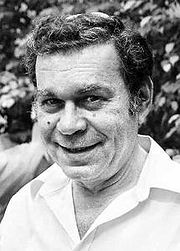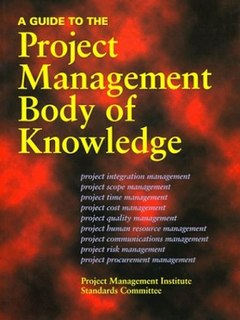
A workflow consists of an orchestrated and repeatable pattern of activity, enabled by the systematic organization of resources into processes that transform materials, provide services, or process information. It can be depicted as a sequence of operations, the work of a person or group, the work of an organization of staff, or one or more simple or complex mechanisms.
Critical chain project management (CCPM) is a method of planning and managing projects that emphasizes the resources required to execute project tasks. It was developed by Eliyahu M. Goldratt. It differs from more traditional methods that derive from critical path and PERT algorithms, which emphasize task order and rigid scheduling. A critical chain project network strives to keep resources levelled, and requires that they be flexible in start times.

Eliyahu Moshe Goldratt was an Israeli business management guru. He was the originator of the Optimized Production Technique, the Theory of Constraints (TOC), the Thinking Processes, Drum-Buffer-Rope, Critical Chain Project Management (CCPM) and other TOC derived tools.

The Project Management Body of Knowledge (PMBOK) is a set of standard terminology and guidelines for project management. The body of knowledge evolves over time and is presented in A Guide to the Project Management Body of Knowledge, a book whose seventh edition was released in 2021. This document results from work overseen by the Project Management Institute (PMI), which offers the CAPM and PMP certifications.
The theory of constraints (TOC) is a management paradigm that views any manageable system as being limited in achieving more of its goals by a very small number of constraints. There is always at least one constraint, and TOC uses a focusing process to identify the constraint and restructure the rest of the organization around it. TOC adopts the common idiom "a chain is no stronger than its weakest link". That means that organizations and processes are vulnerable because the weakest person or part can always damage or break them, or at least adversely affect the outcome.
The thinking processes in Eliyahu M. Goldratt's theory of constraints are the five methods to enable the focused improvement of any cognitive system.
The twelve leverage points to intervene in a system were proposed by Donella Meadows, a scientist and system analyst who studied environmental limits to economic growth.

The Goal is a management-oriented novel by Eliyahu M. Goldratt, a business consultant known for his theory of constraints, and Jeff Cox, the author of many management-oriented novels. The Goal was originally published in 1984 and has since been revised and republished. This book can be used for case studies in operations management, with a focus geared towards the theory of constraints, bottlenecks and how to alleviate them, and applications of these concepts in real life. It is used in management colleges to teach students about the importance of strategic capacity planning and constraint management. Time Magazine listed the book as one of "The 25 Most Influential Business Management Books.
Timeline of project management - there is a general understanding that the history of modern project management started around 1950. Until 1900, projects were generally managed by creative architects and engineers themselves, among those, for example, Christopher Wren, Thomas Telford and Isambard Kingdom Brunel.

Throughput accounting (TA) is a principle-based and simplified management accounting approach that provides managers with decision support information for enterprise profitability improvement. TA is relatively new in management accounting. It is an approach that identifies factors that limit an organization from reaching its goal, and then focuses on simple measures that drive behavior in key areas towards reaching organizational goals. TA was proposed by Eliyahu M. Goldratt as an alternative to traditional cost accounting. As such, Throughput Accounting is neither cost accounting nor costing because it is cash focused and does not allocate all costs to products and services sold or provided by an enterprise. Considering the laws of variation, only costs that vary totally with units of output e.g. raw materials, are allocated to products and services which are deducted from sales to determine Throughput. Throughput Accounting is a management accounting technique used as the performance measure in the Theory of Constraints (TOC). It is the business intelligence used for maximizing profits, however, unlike cost accounting that primarily focuses on 'cutting costs' and reducing expenses to make a profit, Throughput Accounting primarily focuses on generating more throughput. Conceptually, Throughput Accounting seeks to increase the speed or rate at which throughput is generated by products and services with respect to an organization's constraint, whether the constraint is internal or external to the organization. Throughput Accounting is the only management accounting methodology that considers constraints as factors limiting the performance of organizations.

An operating expense, operating expenditure, operational expense, operational expenditure or opex is an ongoing cost for running a product, business, or system. Its counterpart, a capital expenditure (capex), is the cost of developing or providing non-consumable parts for the product or system. For example, the purchase of a photocopier involves capex, and the annual paper, toner, power and maintenance costs represents opex. For larger systems like businesses, opex may also include the cost of workers and facility expenses such as rent and utilities.
Student syndrome refers to planned procrastination, when, for example, a student will only start to apply themselves to an assignment at the last possible moment before its deadline. This eliminates any potential safety margins and puts the person under stress and pressure. According to one academic source, it is done in order to induce a level of urgency high enough to ensure the proper amount of effort is put into the task.
The Evaporating Cloud is one of the six Thinking Processes in the Theory of Constraints. The Evaporating Cloud (EC) - also referred to in the literature as "the cloud", or as a "conflict resolution diagram" - is a logical diagram representing a problem that has no obvious satisfactory solution.
Throughput is rate at which a product is moved through a production process and is consumed by the end-user, usually measured in the form of sales or use statistics. The goal of most organizations is to minimize the investment in inputs as well as operating expenses while increasing throughput of its production systems. Successful organizations which seek to gain market share strive to match throughput to the rate of market demand of its products.

Critical Chain is a novel by Dr. Eliyahu Goldratt using the critical chain theory of project management as the major theme. It is really a teaching method for the theory.
Performance engineering encompasses the techniques applied during a systems development life cycle to ensure the non-functional requirements for performance will be met. It may be alternatively referred to as systems performance engineering within systems engineering, and software performance engineering or application performance engineering within software engineering.
Necessary But Not Sufficient is a 2000 novel authored by Dr. Eliyahu Goldratt and co-authors Eli Schrangenheim and Carol A. Ptak and published by the North River Press, which has previously published most of Goldratt's works. Necessary But Not Sufficient is written as a "business novel" and shows the fictional application of the theory of constraints to enterprise resource planning (ERP) and operations software and organizations using that software. The fourth of five published Goldratt business novels, this one does not share any of the settings or characters of the previous three novels.

Edward David Asihene Obeng is a British organisational theorist, educator, and author, who serves as a professor at Henley Business School and Hult International Business School's Ashridge Executive Education. Oben founded Pentacle and serves as its executive director. Obeng has been described variously as "a leading revolutionary" and "an agent provocateur" by the Financial Times, and by Abbey National as their "secret weapon".

A single point of failure (SPOF) is a part of a system that, if it fails, will stop the entire system from working. SPOFs are undesirable in any system with a goal of high availability or reliability, be it a business practice, software application, or other industrial system.
Theory of constraints (TOC) is an engineering management technique used to evaluate a manageable procedure, identifying the largest constraint (bottleneck) and strategizing to reduce task time and maximise profit. It assists in determining what to change, when to change it, and how to cause the change. The theory was established by Dr. Eliyahu Goldratt through his 1984 bestselling novel The Goal. Since this time, TOC has continued to develop and evolve and is a primary management tool in the engineering industry. When Applying TOC, powerful tools are used to determine the constraint and reduce its effect on the procedure, including: